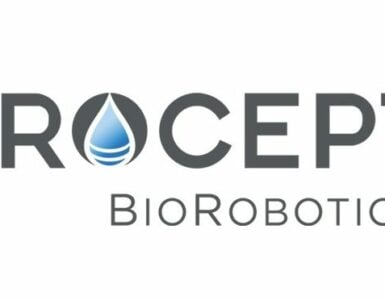Zimmer Biomet Holdings, Inc. has announced U.S. Food and Drug Administration (FDA) 510(k) clearance of the ROSA® Shoulder System for robotic-assisted shoulder replacement surgery. ROSA Shoulder is the world’s first robotic surgery system for shoulder replacement, and the fourth application for the Company’s comprehensive ROSA® Robotics portfolio, which includes the ROSA® Knee System for total knee arthroplasty and ROSA® Hip System for total hip replacement.
ROSA Shoulder strengthens Zimmer Biomet’s innovative shoulder implant portfolio, which includes the Identity Shoulder System, and joins ZBEdge™ Dynamic Intelligence™, which has the power to enhance the company’s cutting-edge digital technologies, robotics and implant solutions.
“We are proud and excited to be the first company in the world to deliver a robotic surgical assistant for anatomic and reverse shoulder replacement surgery,” said Ivan Tornos, President and Chief Executive Officer at Zimmer Biomet. “ROSA Shoulder represents a novel advancement intended to help surgeons leverage the power of robotics and data analytics to perform highly complex shoulder procedures with accuracy1 and efficiency.”
ROSA Shoulder is designed to give surgeons the flexibility to execute a total shoulder replacement using anatomic or reverse techniques and to enable precise placement for improved outcomes1. ROSA Shoulder is one of the only systems that can reproduce humeral head resectioning, and can ease insertion of instruments into incisions by requiring no pin in the center of the glenoid during procedures. Like all ROSA Robotics applications, ROSA Shoulder is designed to support data-informed physician decision-making based on a patient’s unique anatomy. Pre-operatively, ROSA Shoulder integrates with the newly released Signature™ ONE Surgical Planning System 2.0, which uses a 3-D image-based approach to visualization, surgical planning and patient-specific guide creation. During the surgery, the platform provides surgeons with real-time, intra-operative data to help them control, execute and validate personalized plans for glenoid and humeral placement1, with a goal to reduce complications for patients.2,3,4,5
“One of the challenging aspects of performing a shoulder replacement is accurate glenoid and humeral placement, which is a critical factor for post-operative function and long-term implant survival,” said John W. Sperling, MD, MBA, Professor of Orthopedic Surgery at Mayo Clinic. “This innovative approach is designed to allow surgeons to virtually walk through a procedure before making any resections, and then receive live feedback and the ability to control glenoid ream depth and intra-operatively validate cut resections during the procedure.”
ROSA Shoulder will be commercially available in the U.S. in the second half of 2024, and will work with the mymobility® Digital Care Management Platform to bolster the ZBEdge Dynamic Intelligence portfolio for patients undergoing shoulder replacement surgery.
References:
1 Data on File FER-JSB231211-01 Rev. A. Cadaveric studies not indicative of clinical performance.
2 Gregory TM, Sankey A, Augereau B, Vandenbussche E, Amis A, Emery R, Hansen U. Accuracy of glenoid component placement in total shoulder arthroplasty and its effect on clinical and radiological outcome in a retrospective, longitudinal, monocentric open study. PLoS One 8(10): e75791, 2013.
3 Chalmers PN, Boileau P, Romeo AA, Tashjian RZ. Revision Reverse Shoulder Arthroplasty. J Am Acad Orthop Surg. 2019 Jun 15;27(12):426-436. doi: 10.5435/JAAOS-D-17-00535. PMID: 31170096.
4 Franta AK, Lenters TR, Mounce D, Neradilek B, Matsen FA 3rd. The complex characteristics of 282 unsatisfactory shoulder arthroplasties. J Shoulder Elbow Surg. 2007 Sep-Oct;16(5):555-62. doi: 10.1016/j.jse.2006.11.004. Epub 2007 May 16. PMID: 17509905.
5 Duethman NC, Aibinder WR, Nguyen NTV, Sanchez-Sotelo J. The influence of glenoid component position on scapular notching: a detailed radiographic analysis at midterm follow-up. JSES Int. 2020 Jan 14;4(1):144-150. doi: 10.1016/j.jses.2019.11.004. PMID: 32195477; PMCID: PMC7075770.
Source: Zimmer Biomet










